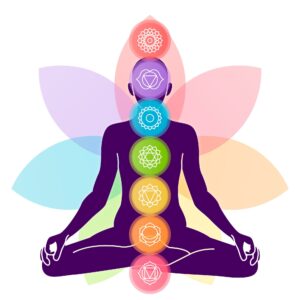THE METHOD OF THE VEDAAS TO REVEAL THE SELF
(YAM NETI-NETI VACHANEIHI NIGAMAA- AVOCHUHU)
30. Q: What are the Nigamas?
A: The Upanishads are the parts of the Vedas. These Upanishads reveal the secret of the Principle of the Self. Such Upanjshads are called the “Nigamas “. Through the preaching’s of these Upanishads only the Form of the Self can be clearly revealed. In order to know the Self, there is no other method than this.
Q: What do these Upanishads describe the Self?
A: The Upanishads describe: The Principle of the Self is : ‘ not this, not this ‘.
Q: It should be described that the Principle of the Self is this. Instead of that what is use of this strange method?
A: By this strange method which is the right one, the Principle of the Self is revealed. This is because the Principle of the Self cannot be described directly. This method is also the beneficial one.
THE SELF IS NOT AN OBJECT EITHER TO THE MIND OR TO THE WORDS; AND THE WORDS ARE ILLUMINED BY HIM ALONE
(MANASO VACHASAAMAGAMYAM VAACHO VIBHAANTI NIKHILAA YAD-ANUGRAHENA)
31. Q: Why don’t the words explain Him?
A: The words don’t explain Him (the Self). It is because, the words naturally don’t illumine by themselves. A self-shining object is called Svayam-Prakaasha, the self-illuming one. We have already shown that the self-illuming Self illumines these words as his objects. Similarly, the mind is illumined by the Self, himself. A burning-lamp shows surrounding objects, but the objects don’t help to show the lamp. Similarly, either the words or the mind don’t help to reveal the Self.
Q: Sir, you have told that the Self can be known through the sentences of the Upanishads only. What does it mean? When the Vedaantic words fail to explain the Self, then how does a sentence of Vedaanta become an authority to know the Principle of the Self?
A: A Pramaana, the authority means an instrument to Pramaa, the knowledge. The Pramaa means an exact knowledge. The Vedaanta sentences reveal the exact Principle of the Self; hence these sentences become the authority. Describing an object is no t only a means to know it; somehow if the object is known exactly, that is enough. In order to know a water-lily a description is needed. A water-lily is a big flower having blue colour and good smelling. This explanation gives the knowledge of flower. Here, colour an d smell are properties of that flower. With the help of these properties we get the knowledge of the flower. But see this sentence: It is Devadatta’s house above which a crow is flying. This sentence helps us to know the house of Devadatta. The flying crow is not a property of the house. It is a mere Upa-lakshana, a sign to show the house. Suppose an object is having a few properties that the object can be explained by using them in sentences. If an object doesn’t have any property, that cannot be explained through properties. The Self-Principle doesn’t have any property. Hence, it is Nirguna, with-out qualities, the Supreme Soul. In order to reveal the Self the Upanishads negate all the objects that are having properties ( qualities ). Therefore, the Upanishads rightly tell: ‘not this, not this ‘. This is the purport of the Vedic sentences when they tell: ‘ It is not stout, nor small, nor short nor long ‘.
THE SELF IS GOD AMONG GODS, UN-BORN, IMPERISHABLE
(TAM DEVA-DEVAM – AJAM-ACHYUTAM –AAHURAGRYAM)
32.Q: If nothing is that , then, how do we know that the Self is this?
A: We have already explained this (Q. no. 5, 25). Nothing is needed to know the self-illuming object. The Self is our own Form. It is in the Form of Awareness (Chidroopa). Hence the Soul is the self-revealing one ( Svayam Prakaasha ). Therefore, it is enough to tell that the Form of the Self is not similar to the non-self-objects like body, etc; and the Form of the Self exists ready to reveal, Himself. Therefore, the Self is called the God among gods. The god (Deva) means an illuming one. Organs of sense etc. also have the light of awareness. In spite of that, the light of awareness found in them really belongs to the Self who is in the Form of Awareness. Hence, the Self is the God of gods; meaning that He illumines the illumining organs of sense, etc. In order to clarify this meaning an example from the material science can be taken: We believe that the moon shines by its own light. But, the scientists tell that the moon reflects the light of the Sun. But, the Sun is a self-luminous body. Similarly, according to the thinking of common people, the mind and the organs of sense have light of awareness. But, the Self is the original source of the Light of Awareness and He illumines the mind and organs of sense. Hence, the Self is the God of gods. (Here, gods=mind, and organs of sense.)
Q: When does the light of the Self originate?
A: This is Aja, the birth less one. It is not originated. If it takes birth, it has to be perished. The wise tell that without a witness none can believe either birth or death; if such a witness exists, He becomes the all perceiving Self; this Self is birth less, deathless and He is the First and the Foremost of all.
Q: Sir, while explaining the first verse, you have decided that the Form of the Self is Being- Awareness- Bliss ( Q. no. 20& 21 ). But, while explaining this verse, you tell that the Self doesn’t have any quality; therefore, the Upanishads tell that the Self is: ‘ not this, not this ‘. Are not these two contrary statements?
A: No. Being-Awareness-Bliss-Form doesn’t mean that the Self has such properties. ‘ Sat ‘ means the Self is not false like the non-self; Chid means the Self is not illuminated by any object; Aananda means the Self is not of the form of sorrow. Thus the word: Sat-Chid-Aananda is used to tell that the properties of the non-self-objects don’t belong to the Self; and that word doesn’t tell that the Self has such properties like ‘ Sat ‘, ‘ Chid ‘ and ‘ Aananda’. Really speaking, the Self is neither in the form of ‘Asat ‘ , the non-existence; nor that of ‘ Sat ‘ the existence. It is neither ‘Achid’ the non-awareness; nor ‘Chid’, the awareness. It is neither in the form of ‘ Duhkha’ , sorrow; nor bliss. Hence, the Self is ‘ Nirvishesha’ , the one who has absence of difference ; and the ‘Vedaantins’ say that the Self doesn’t have any special form.




